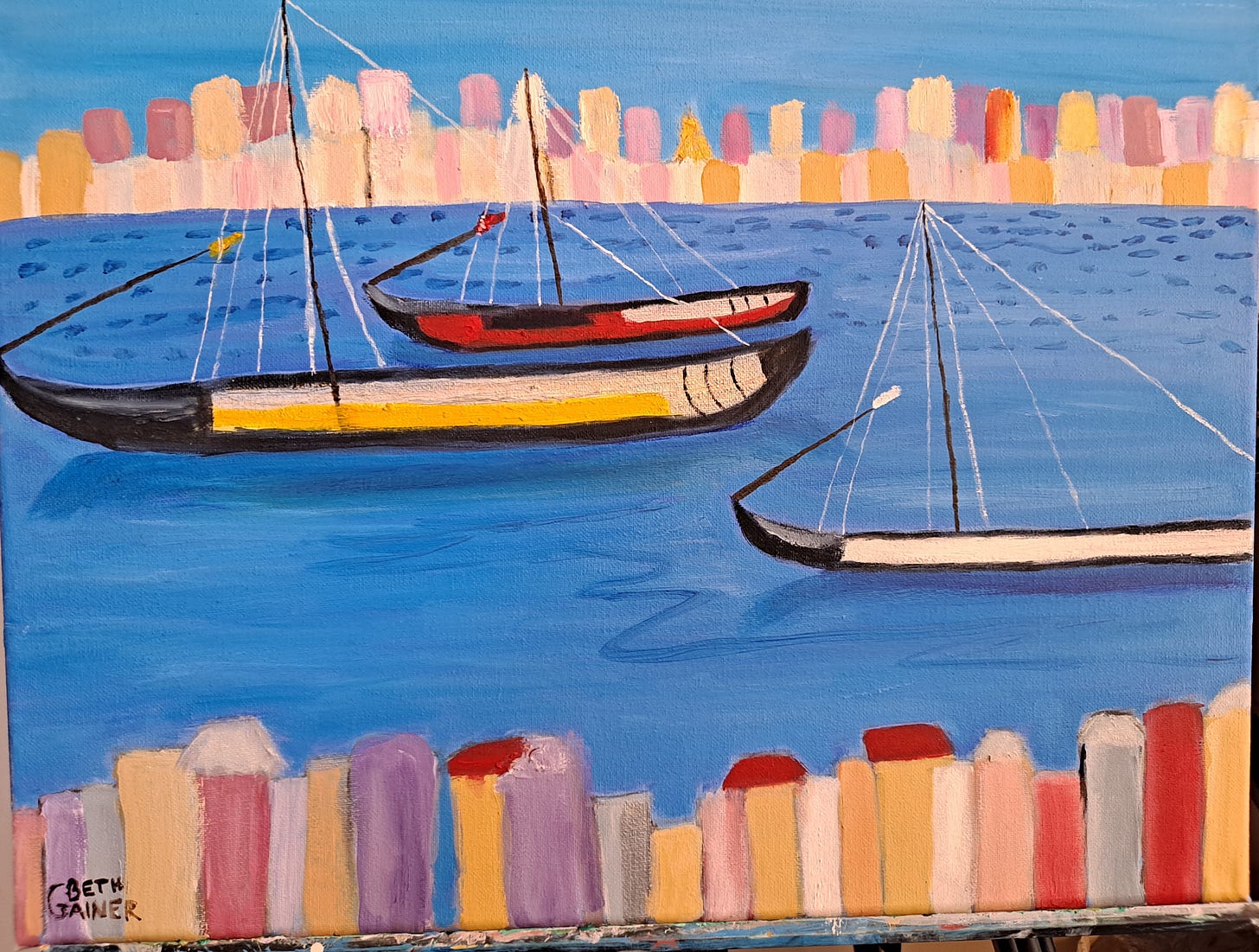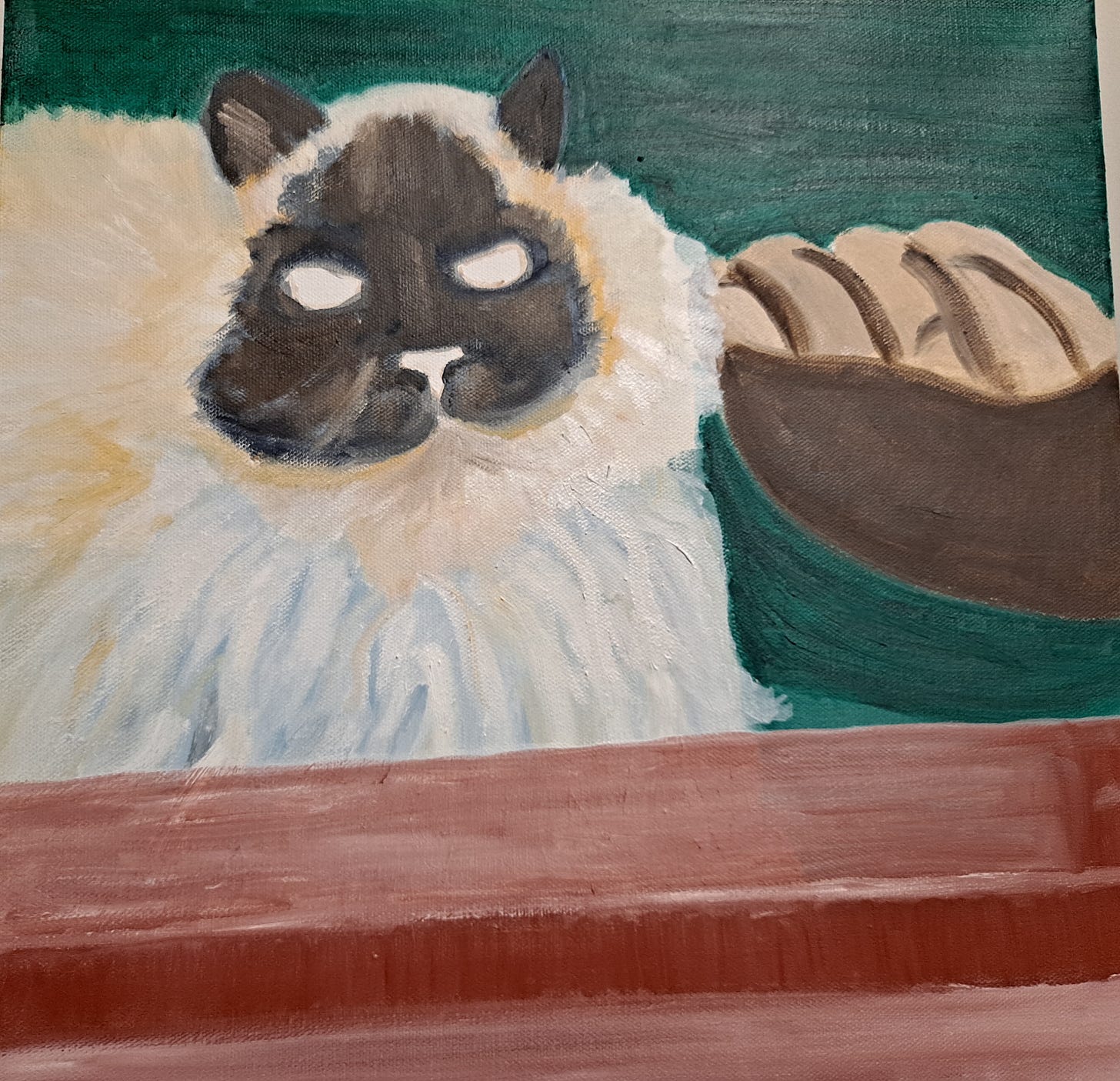I finished another painting, which I’m naming Boats, Portugal. I have not been to Portugal, but my brother traveled there and sent me a plethora of good pictures. The painting appears a bit later in this post, and I’m proud of it. When I was starting out as an artist, I kept asking experienced artists how they could tell when a piece of art was completed. And they said they just knew, leaving me in a state of confusion.
Now, years later, I can usually tell when I’m finished creating a piece of art.
And I realize that finishing this piece was not just in my hands. After all, my brother took the photo. Alene pointed out a misstep I made in an early draft, and my friends gave me their opinions. My daughter – who is a great artist and has a stellar eye – also gave me advice.
Turns out, it can take a village to create a piece of art.
Now for details on how I created and finished this landscape. The original photo had only the yellow and red boats, but I added a white one on the right side of the canvas to balance the painting. To add another splash of color, I added a bright orange-red building in the background on the right side of the canvas. Then I added the brown poles and white ropes to the boats. The poles and ropes are so thin that I thought they wouldn’t add much to the painting, but I was wrong. They complete it in a big way.
Now a word about painting the boats’ poles and ropes: I was tempted to use a ruler, as my hand not surprisingly trembles. Then I was tempted to use a mahl stick; this tool is a type of pole that artists use to help keep their arms, and thus hands, steady while drawing fine details. To see what a mahl stick looks like, click here.
By the way, I don’t believe that using rulers or other tools in art is cheating. The great master artists centuries ago used a variety of tools to help them create magnificent art.
For Boats, Portugal, I used the painting itself as a tool by leaning my arm on the dry parts, which was most of the landscape. I then took the plunge and tried to make the lines as straight as possible with a super-thin brush. Where the white lines are not perfectly straight, I told myself the ropes are a bit frayed and wind-blown. That’s my imagination, and I’m sticking to it!
Because these last touches didn’t take too long, I reworked my draft of the portrait of my cat Oliver:
I still don’t like the way I’ve portrayed his bed thus far, but I added brown to his dark points in his face and ears to soften his look and to be more accurate with his coloring. And I added some texture with Indian Red on the bottom of the canvas.
And I must wax poetic about the background color: Viridian. This shade of green is stunning in all its jewel-toned glory. It has quickly become one of my favorite colors, definitely my favorite green.
I have quite a number of paintings waiting in the wings to be painted, so color me happy.






One more thing…I never heard of a mahl stick until you mentioned it!
Beth, I love the final version of the boats! Yes, the ropes should be frayed. And I love the Oliver painting. Viridian green is a beautiful shade. Keep on painting! It does take a village. Allowing yourself to be vulnerable enough to share a painting in progress is the best way to improve!